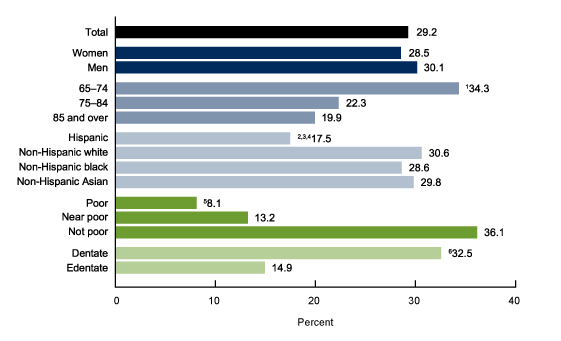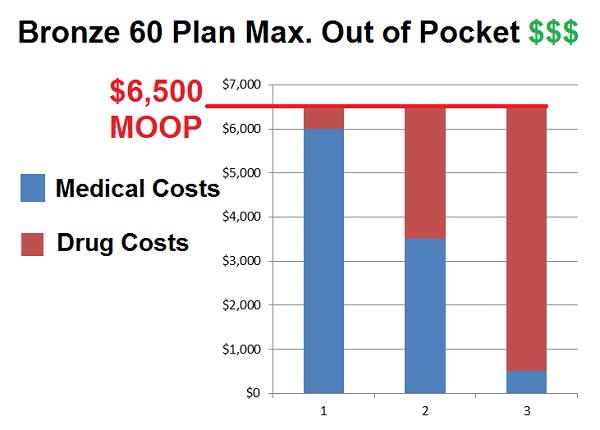Does Medicare Have a Dental Plan for Seniors. Dental Vision and Hearing Insurance for seniors ages 65 is very inexpensive.
 Dental Insurance For Seniors Over 65
Dental Insurance For Seniors Over 65
Dental insurance is something many older people may want.

Dental insurance after 65. However Original Medicare does not include routine dental services. Having dental insurance throughout retirement can keep you on the right track with accessibility to routine dental care and procedures to keep your smile healthy. Other dental plans are stand alone and only cover dental costs.
Be aware that the. So seniors must look elsewhere for dental coverage that can help protect their teeth. We used independent non-profit FAIR Health Consumer to get cost estimates of some dental procedures and came up with the following chart.
Since most Medicare coverage doesnt include dental insurance its no surprise that nearly 50 percent of older adults aged 65-80 dont have dental insurance at all. Help mitigate common problems. Convenient and cost-effective Humana dental insurance is the best deal on todays market for those whove served in the military under the Preventive Plus for Veterans plan.
Spirit Dental mentioned in our guide Best Dental Insurance for Seniors offers benefits like a one-time deductible of 100 no age limit and. You can get dental insurance for NHS-only or NHS and private treatments. Aetna Dental Directs PPO plans allow you to see any dentist you want.
Aetna Dental Direct is Aetnas standalone dental insurance. Yes there are dental plans for seniors. Dental insurance for seniors is the same as dental insurance for other individuals but focuses on the coverages seniors will need.
Annual benefit maximums are usually about 1250. These include crowns root. Some Medicare Advantage plans include routine dental benefits.
Gum disease 68 and dry mouth 30 are widespread among Americans 65 and older. How to Get Dental Insurance After 65 Summary. HMO plans offer low cost insurance for people over 65 although they may be limited in options.
Dental insurance and oral health Overall about half of adults age 6580 47 reported that they do not have dental insurance. Dental insurance for seniors is similar to plans for other individuals but focuses on the types of. Affordable dental plans for seniors are offered through many major insurance companies.
Of the 53 of older adults with dental insurance the most common sources included coverage through an employer 27 Medicare Advantage plan 26 retiree health plan 22 or an individually purchased plan 19. Youll need to pay a monthly amount to your insurer in return for cover. In addition people over 65 are more susceptible to oral cancer.
Many companies offer dental plans specifically for seniors. We reviewed 10 companies based on price coverage caps and more to find the best dental insurance options for seniors before deciding on the six best. Youll still have pay the dentist first then claim back the cost from your insurer.
Older adults represent a group that may find it worthwhile to enroll in a dental insurance plan. You should check what dentists and procedures are covered in your area before signing any dental insurance plan but especially an HMO plan. Dental insurance plans for seniors over 65 often offer reasonable pricing options.
Some Medicare Advantage plans include dental coverage. Some dental policies might have set annual limits of around 500 to 1000. Dental insurance often pays off for seniors Dental insurance can be had for under 100 a month paying out a maximum of 1000 to 5000 annually.
Only a one-year commitment is required to enjoy the immense benefits of this exclusive. Overall about half of adults age 6580 47 reported that they do not have dental insurance. Yes seniors should buy dental insurance.
On average these insurance plans cost between 22-65 monthly. Monthly premiums vary based on locations ranging from 51 to 79 for most older adults. 7 reported another source of dental insurance.
Seniors shopping for dental insurance plans may benefit from reviewing the services they feel. We would love to go over these dental insurance options especially if youre age 65 and up. Like many dental insurance plans waiting periods of 6 months to 12 months may apply for basic or major services.
Nearly all older adults reported that their oral health was important to them 98 felt that regular dental. In fact 47 of adults ages 65 to 80 years old skip buying insurance according to the National Poll on Healthy Aging because its not easy to find an affordable dental plan with the right coverage. For a 70-year-old youre looking at as low as 35 per month.
This may include low premiums and low deductibles for basic and major services. Dental insurance for seniors over 65 is not included in Original Medicare unless medically necessary or Medigap supplement plans. How Much Does Dental Vision and Hearing Insurance Cost.
How does dental insurance work.

